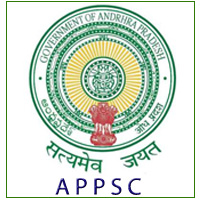 APPSC Royalty Inspector Syllabus Question Pattern 2020.
APPSC Royalty Inspector Syllabus Question Pattern 2020.
Free download pdf Andhra Pradesh Public Service Commission APPSC APPSC Royalty Inspector Syllabus Question Pattern
SUPPLEMENTAL NOTIFICATION NO. 07/2011 TO NOTIFICATION NO. 50/2008, Dt. 31/12/2008
(General Recruitment)
SCHEME AND SYLLABUS FOR THE ROYALTY INSPECTORS IN A.P. MINING SERVICE SCHEME
DEGREE STANDARDPART – A:WRITTEN (Objective Type) EXAMINATION (DEGREE STANDARD)PAPER-1 General Studies And Mental Ability 150 Marks 150 Questions. 150 Minutes
PAPER-2 Subject: Geology 300 Marks 150 Questions. 150 Minutes
PART – B: ORAL TEST (INTERVIEW) 50 Marks
PAPER-I: GENERAL STUDIES AND MENTAL ABILITY
GENERAL STUDIES AND MENTAL ABILITY
1. General Science – Contemporary developments in Science and Technology and their implications including matters of every day observation and experience, as may be expected of a well-educated person who has not made a special study of any scientific discipline.
2. Current events of national and international importance.
3. History of India – emphasis will be on broad general understanding of the subject in its social, economic, cultural and political aspects with a focus on AP Indian National Movement.
4. World Geography and Geography of India with a focus on AP.
5. Indian polity and Economy – including the country’s political system- rural development – Planning and economic reforms in India.
6. Mental ability – reasoning and inferences
PAPER-2: GEOLOGY
Part – I
a) General Geology: Solar System. The Earth: its origin, age and internal constitution.
Volcanoes-types, distribution geological effects and products. Earth-quakes-intensity, magnitude, distribution, causes and effects. Elementary ideas about isostasy, geosynclines, mountain building, continental drift, sea floor spreading and plate tectonics.
b) Geomorphology: Basic concepts. External and internal processes. Rock weathering. Cycle of erosion. Fluvial landforms and drainage patterns. Landforms of Aeolian, marine, glacial and ‘Karst’ landscapes. Elements of Remote Sensing.
c) Structural and field Geology: Primary and secondary structures. Dip and strike of beds. Unconformities. Study of folds, joints, faults, foliation and lineations. Overthrusts and nappe structures. Stages of rock deformation. Construction of block diagrams, Stereographic and equal-area nets. Solutions of simple problems by stereographic net. Topographic maps and their interpretation. Use of clinometer compass in the field Measurements of bed, foliation, folds joints, faults and lineations in the field. Principles of geological mapping. Effects of topography on outcrops. Drawing of sections.
Part – II
a) Crystallography: Elements of crystal structure. Laws of crystallography, Symmetry elements of normal classes of seven crystal systems. Properties and interaction of light and crystalline
matter. Petrological microscope and accessories. Construction and use of Nicole prism.
Pleochroism, double refraction, extinction angle, birefringence and twinning in crystals, Isotropic,
uniaxial and biaxial minerals.
b) Mineralogy: Physical, chemical and optical properties of the following common rock forming minerals: quartz, feldspar, mica, pyroxene, amphibole, olivine, garnet, chlorite, carbonates, aluminosilicates. Structure of silicates and crystal chemistry of minerals. Gemstones.
c) Economic Geology: Ore, ore mineral and gangue. Classification of ore deposits. Important processes of their formation. Occurrence, origin and distribution in India of the ores of aluminium, chromium, copper, gold, lead, zinc, iron, manganese and radioactive elements. Deposits of minerals use as abrasives, refractories and in ceramics, deposits of coal and petroleum. Elements of prospective of mineral deposits.
Part – III
a) Igneous Petrology: Origin of magma and formation of igneous rocks. Bowen’s reaction
principle. Crystallisation of binary systems. Classification of igneous rocks. Textures and
structures of igneous rocks. Composition, origin and mode of occurrence of granite, syenite
diorite, mafic and ultramafic groups, anorthosites and alkaline rocks.
b) Sedimentary Petrology: Sedimentary process and products. Classification of sedimentary rocks. Sedimentary structures. Residual deposits – their mode of formation, chacteristics and types, Clastic deposits – their classification, mineral composition and texture. Elementary ideas about the origin and characteristics of quartz arenites, arkoses and greywackes. Siliceous and calcareous deposits of chemical and organic origin.
c) Metamorphic Petrology: Types and factors of metamorphism. Zones, grades and facies of metamorphism. Regional and contact metamorphism. Textures and structures of metamorphic rocks. Metamorphism of argillaceous, arenaceous, calcareous and basic rocks. Metasomatism.
Part – IV
a) Paleontology: Habits and habitats of animals. Fossils and fossilization. Modes of preservation. Application of fossils, Study of morphology and geological history of Foraminiferida, Brachipoda, Bivalvia, Gastropoda, Cephalopoda, Trilobita, Echinoidea and Anthozoa. Mammals of Siwalik Group. A brief study of Gondwana flora.
b) Stratigraphy and Geology of India: Fundamental laws of stratigraphy. Stratigraphic
classification lithostratigraphic, biostratigraphic and chronostratigraphic. Geological time scale. Physiographic divisions and outline of stratigraphy of India. Brief study of Dharwar, Vindhyan and Gondwana Supergroups and Siwalik Group with reference to their major subdivisions, lithology, fossils, aerial distribution and economic importance.
Similar Pages..

